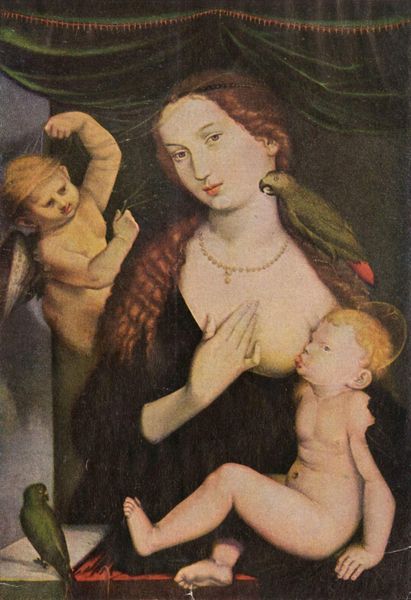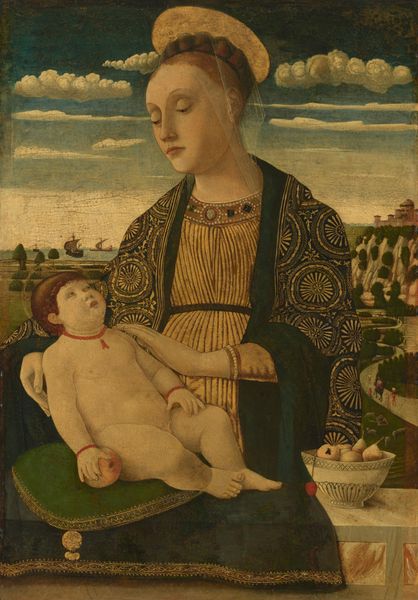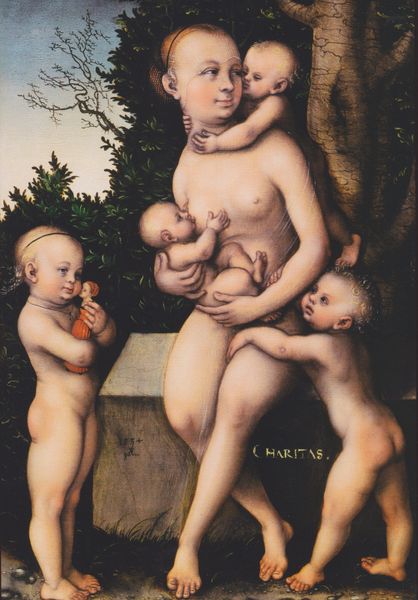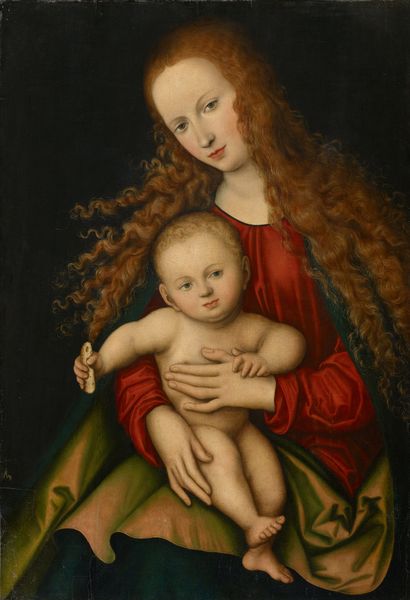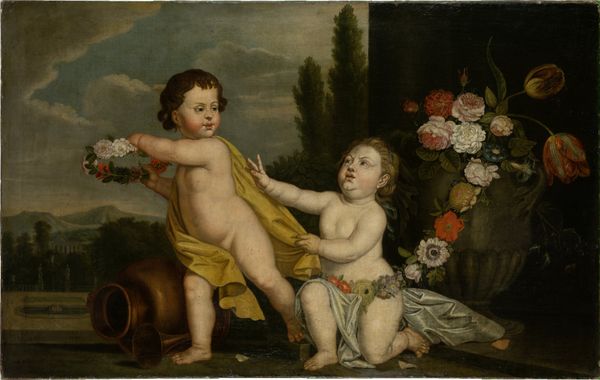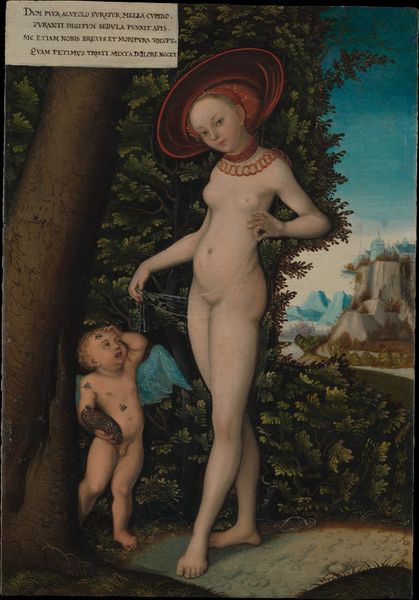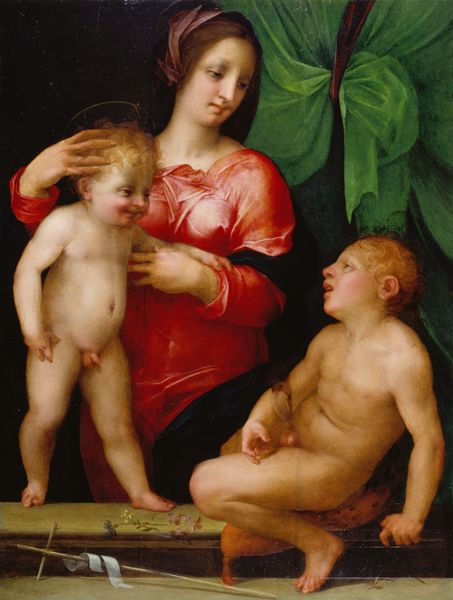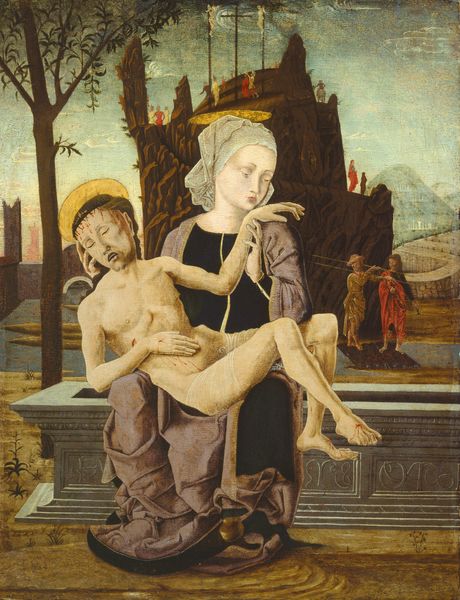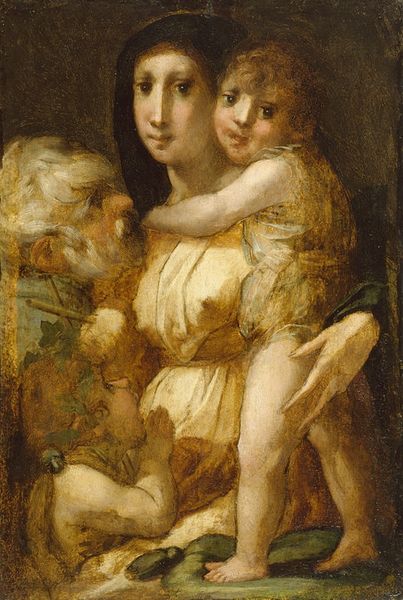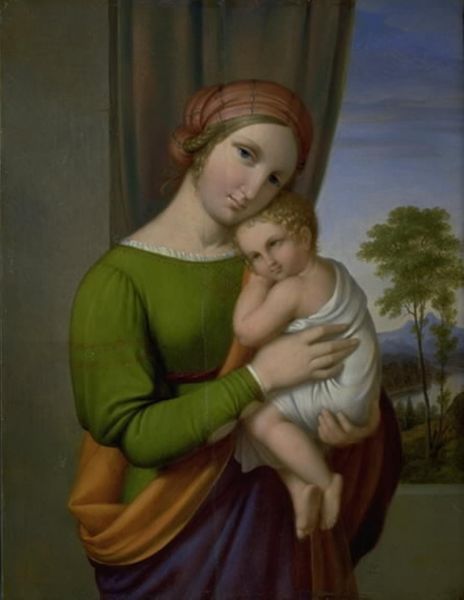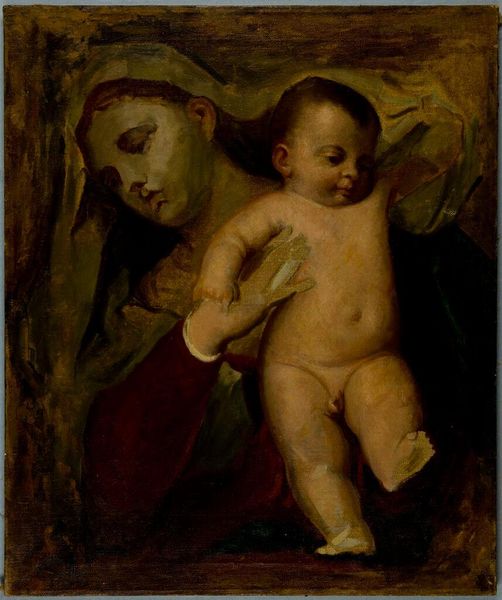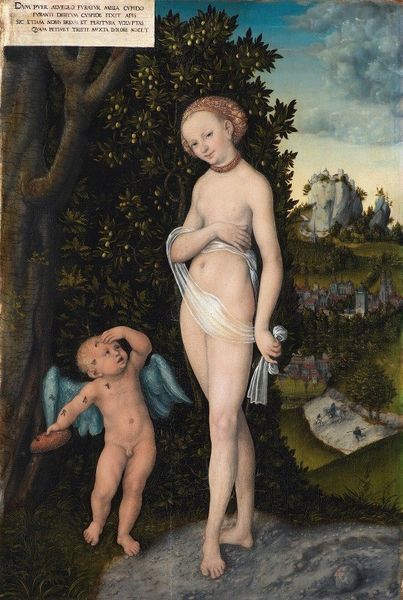
painting, oil-paint
#
portrait
#
painting
#
oil-paint
#
oil painting
#
folk-art
#
romanticism
#
genre-painting
#
realism
Dimensions: overall: 61.9 x 48.2 cm (24 3/8 x 19 in.) framed: 82.6 x 69.2 x 9.2 cm (32 1/2 x 27 1/4 x 3 5/8 in.)
Copyright: National Gallery of Art: CC0 1.0
Curator: Here we have Abram Ross Stanley's oil painting, "Joshua Lamb," created in 1842. The composition depicts a child with a dog against a whimsical landscape backdrop. What are your first thoughts? Editor: It has such a melancholic air to it. The child’s eyes, though wide, seem devoid of joy, and the dog mirroring that sense of resignation. The color palette, especially the yellows and greens, amplify that muted sorrow. Curator: It's interesting that you pick up on the somber mood. For me, it evokes the visual language of folk art portraits in that period. Consider the simplified forms, flattened perspective, and that almost otherworldly landscape visible in the background. These weren’t necessarily attempting to mimic reality. Editor: That's true, and there’s definitely a constructed nature about it that speaks to its time. I wonder about the intentionality behind this presentation of childhood and status. Were these early photographic images conveying similar notions of youth, class, and colonial presence? Curator: Perhaps. Notice how the light renders almost every object with a crisp definition: each ruffle in the dress, every leaf, and the sleepy dog. Light serves not to blend elements together but rather to call attention to individual items, as though we’re meant to itemize the symbols of domestic life. Editor: Absolutely, the dog serving not just as a pet but as a signifier of belonging and perhaps leisure. Given the era, this feels loaded with the complexities of class, access, and perhaps even power dynamics embedded within domestic spaces. And this backdrop with a landscape in its right, do you think that the artist wanted to imply that all this ‘genre painting’ happening right in the bosom of a romantic and rural scenery? Curator: It very well could be! I agree, these items are carefully coded. Consider the larger tradition of commissioned portraits; how status and familial pride are often placed at the forefront. The symbolism seems magnified through Stanley's particular artistic vocabulary, using these genre and landscape features as props to the characters. Editor: It pushes us to question what this carefully constructed innocence is masking, and to understand the context to see its narrative not as a single view, but a spectrum. It is precisely in these constructed images where society's fault lines and tensions can reveal themselves. Curator: An incredibly powerful way to frame our discussion today, acknowledging those visual and cultural layers in such artwork. Editor: Thank you! The picture invited a multifaceted approach.
Comments
No comments
Be the first to comment and join the conversation on the ultimate creative platform.
